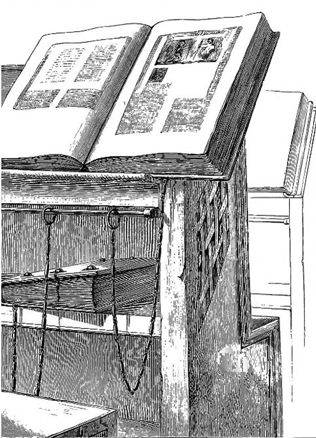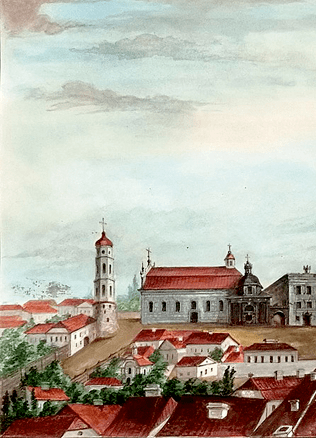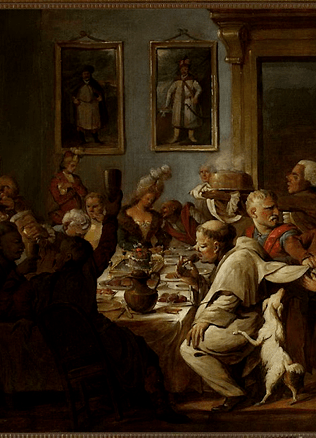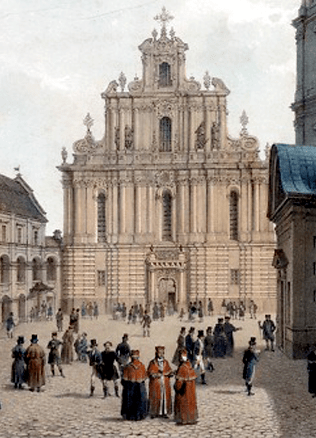Pažaislis as an Italian Ensemble in the Midst of Lithuanian Woods
The beauty hidden from the eyes of people
This is how the traveller Julian Ursyn Niemcewicz starts the description of his visit in Pažaislis at the beginning of the 19th century: “Towards the evening, I recall coming to the hill, on which the famous monastery of Pažaislis stands. It is surrounded by huge centenarian oaks and groves consisting of various trees. The arrows of the setting sun lit up the dome surrounded by the immense greenery. I cannot wait to take a closer look at his place, trying to get a first-hand knowledge of this devout hermitage. I left the sledges at the bottom of the hill and started walking uphill.”
It comes as a paradox that one of the most outstanding and beautiful ensembles of Baroque were erected in the tenebrous encirclement of the woods and the river instead of having been built in the city, close to the palace’.
How and why did that happen?
In the 17th century, perhaps the two most exquisite Baroque monasteries were built in the Grand Duchy of Lithuania. They were erected by hermit monks in the Carthusian monastery in Byaroza (the Carthusians being funded in the mid-17th century by the vice-chancellor of the Grand Duchy of Lithuania Kazimierz Leon Sapieha) and in Pažaislis (in 1664, the Camaldoli were founded by the Grand Duchy’s Chancellor Krzysztof Zygmunt Pac). Both monasteries, as was required by the regulations of the religious orders, were built in the natural surroundings, at a distance from the residential areas. Travellers of the 18th-19th century could not help wondering at their beauty and gave witness account of their exceptional artistic excellence. Of the two afore mentioned Baroque ensembles, only that of Pažaislis has survived until our days.
The construction of the Pažaislis Camaldolese monastery and the church was started in 1667, the major construction and decoration works were completed by the end of the 17th century, and the church was consecrated as the Catholic church of the Visitation of the Blessed Virgin Mary in 1712. The Pažaislis ensemble was built in accordance with the principle of symmetry. Thus, the monastery starts with the gates decorated with sandstone. A further narrow passage brings us to the Great gate of the monastery, with the guest houses welcoming the visitor both on the right and on the left. The monks were famous for offering shelter to the passing-by travelling believers, putting them up for the night and providing meals. Thus, it is not surprising that guest houses are encountered in all Camaldolese monasteries. Having passed through the Great gate, we find ourselves in a spacious churchyard, from which a magnificent view of the Church unfolds. On both sides of the Church, various monastery buildings are symmetrically located, including common religious premises (a dining room, a kitchen, a library, a pharmacy and warehouses) and the residential rooms of the monks. Beyond the Church stretched the eremitorium (a special monastery complex, with the monastics largely living in isolation). In the eremitorium, 13 monastic dwelling houses were built (most of them erected in the 18th century). At the end of the eremitorium, a belfry in late Baroque style was built in the second half of the 18th century.
Italian spirit under the Lithuanian sky
The Pažaislis monastery was built almost exclusively by the Italian artists. Most of them were high-level professionals, specially invited from Italy and having no previous experience of working in the Grand Duchy of Lithuania. Therefore, one should not be surprised by the unique properties and quality of artistic expression of their artwork.
During the construction of the Pažaislis church and monastery, four Italian architects were working full time – the brothers Pietro and Carlo Puttini, Giovanni Battista Frediani and Isidoro Affaitatti. Any construction site, both in the Grand Duchy of Lithuania and beyond it, could only begrudge such a number of architects working on a single site. Hiring such a number of architects was a rare case even in the European cities during large-scale construction. This also attests to the artistic ambitions of Krzysztof Zygmunt Pac.
During the construction of the ensemble, the best examples of Italian architecture were followed. It is not surprising, therefore, that everything in Pažaislis, starting with window framing, portals, monastery galleries and church decoration, reminds us of the architecture encountered in Italy.
Do You Know?
It is no coincidence that the monastery galleries were immured in the 19th century. The reason for the immuring was the Lithuanian climate. In our countries, with cold weather prevailing for a long time, such galleries are impractical. In the 17th century however, all practicality was ignored for the sake of art.
The most distinctive feature of Pažaislis ensemble is a huge dome, rising high above the church and seen from afar. It covers the whole central nave of the church, which is of a rare hexagonal plan. The two-tower facade of the church is of a concave shape, one of the first of this kind in Europe. The facade is designed in such a way so that its middle part is lower and does not obscure the dome, which rises majestically between the two towers of the facade.
The walls revitalized by a Florentine brush
The exclusivity of the Pažaislis church is not merely in its impressive architectural forms. The premises of the ensemble (the church, guest houses and the dining-room) are decorated with wall paintings. In the church alone, more than a hundred frescoes are painted.
Never before had one ensemble in the Grand Duchy of Lithuania been decorated at the same time with such plentiful wall paintings.
A large number of frescoes also reflect an iconographic variety. In them, stories of the Blessed Virgin Mary, Jesus Christ, those of the Saints close to the Camaldolese monks (such as St. Benedict, St. Romualdo, St. Bruno, beat. Bogumil, St. Five martyred brothers) are portrayed. In the other paintings, we find stories about the holy guardians of the church founders (St. Christopher, St. Mary Magdalene de Pazzi, St. Francis Xavier). Almost all the frescoes (with the exception of the fresco on the dome vault, created in the early 18th century) were painted by Michelangelo Palloni from Florence. The painter, who had excelled in portraying religious stories in Italy, was invited to the Grand Duchy of Lithuania by the patron of Pažaislis Krzysztof Zygmunt Pac. The integrity of Pažaislis wall paintings was both the result of the painter’s mastery and the fact that he had spent almost a decade working on it (around 1676–1685).
At a later time, Michelangelo Palloni distinguished himself not only as a talented artist but also as a person charging a high price for his services. Michelangelo Palloni continued to work in Poland and the Grand Duchy of Lithuania until his death. This testifies to the fact that local nobility were willing to commission expensive but highest quality pieces of work. The artist’s paintings expressively convey the moods and emotions of the characters portrayed; in his artwork, the architectural background is plentifully used. Furthermore, in the frescoes one can identify numerous portraits of the persons who lived during the period of painting (the second half of the 17th century). This was a usual phenomenon in the Italian art but innovative in the context of the Grand Duchy of Lithuania art. Michelangelo Palloni spread the highest standards of Italian painting in our lands.
Pažaislis is unique in its innovations and wide ambitions cherished by the Patron
Pažaislis also stands out from the other ensembles by the other decorative details. The premises of the sacristy and the chapter (previously the choir and the altars of the chapels as well) were decorated with a thorough and highly decorative pattern of wood carving. The church was adorned with a high-level stucco moulding (the legacy of the Italian sculptor Giovanni Maria Galli, 1674–1676) and multitone marble. It was due to the use of marble (a decorative but expensive ornament) that the patron’s costs soared significantly. This notwithstanding, namely the marble makes the Pažaislis church so distinctive and unique in the context of the Grand Duchy of Lithuania. Never again – neither before the Pažaislis nor later during the Baroque epoch – was marble so plentifully used to decorate one church.
The exclusivity of Pažaislis is predetermined not by separate artistic details. Innovations can easily be identified in various spheres of architecture and decoration. The uniqueness of the ensemble stems from the fact that all the innovations, most of them following the Italian example, were implemented during the construction of one ensemble.
Mindaugas Paknys



